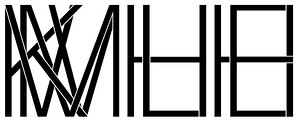The Romantic Trail and the Concrete House
March 8–August 30, 2020
Museen Haus Lange & Haus Esters, Krefeld
Wilhelmshofallee 91-97
47800 Krefeld
Germany
In March 2020, the Kunstmuseen Krefeld are presenting the first German solo exhibition of the Israeli photographer Sharon Ya’ari. Ya’ari has developed a site-specific show for Haus Esters that examines its atmosphere and intellectual history. Erected between 1927 and 1930 by the architect Ludwig Mies van der Rohe, Haus Lange and Haus Esters are two of the most iconic structures in the history of New Objectivity architecture in Germany and representatives of European modernism. The starting point of Ya’aris photographic exploration is the connection between the ideas of European modernism and the effort to implement them in the young state of Israel.
“Ya’ari urgently poses questions that are frequently of interest to us as regards the objectives of the Kunstmuseen Krefeld: How does the legacy of modernism manifest itself? What is its significance for the artistic and societal perspectives of the present day?” asks the museum’s director Katia Baudin. In the process, Ya’ari is less concerned with the perspective of architectural photography but rather with marginalia, the relics of everyday life that are subject to decay and transience. The camera’s gaze exposes the political in the ostensibly trivial and arbitrary, triggering reflections on time, memory and social conditions. The core of the exhibition is made up of multi-part series of photographs, a large-format artist’s book and sculptural elements that Ya’ari dedicated to a public square in the southern Israeli desert city of Beersheba. The artist has frequently returned there, documenting the changes it has undergone over a long period of time. An urban sculpture made of concrete cylinders that the city recently abandoned in conjunction with the redevelopment of the square has been brought to Krefeld, where it finds a new temporary location in the sculpture garden of Haus Esters as a disturbing factor in a modernistic guise, a monument that continues the transfer of forms and ideas, as it were, in the opposite direction. “Modernist utopias overlap with the history of its breaks and fissures,” say the show’s curator Magdalena Holzhey. Ya’ari developed the exhibition as a whole for Haus Esters by creating a dialogue with the architecture through the various techniques he selected and the sizes of his photographs. The exhibition contrasts the iconic space of the villa with the contemporary perspective of a fragile reality.
Sharon Ya’ari (born 1966, lives in Tel Aviv and teaches at the Bezalel Academy of Art and Design in Jerusalem) is one of the best-known Israeli artists of his generation. He has been represented in numerous international solo and group exhibitions, including at the Tel Aviv Museum of Art (IL), National Gallery Museum, Vilnius (LT), Kunsthaus Baselland, Basel (CH), Drexler University Art Gallery, Philadelphia (US), National Gallery of Modern Art, New Delhi (India), Camera Austria, Graz (A), Israel Museum, Jerusalem (IL). In 2018, he was awarded the EMET Prize for Arts, Science and Culture, which is presented in Israel for excellence in academic and professional achievements that have a far-reaching influence and make a significant contribution to society.
The exhibition will be accompanied by a profusely illustrated catalogue (German/English), published by Snoeck Verlag in collaboration with the Oldenburger Kunstverein and the Kunstverein Heilbronn.
In parallel, the Kunstmuseen Krefeld are presenting the exhibition The Memory of Images at Haus Lange (March 8–August 2, 2020), which features a selection of pieces from the museum’s own collections. Works by such artists as Allora & Calzadilla, Christian Boltanski, Käthe Kollwitz, Gerhard Richter, Anri Sala, Thomas Struth, Luc Tuymans and Jeff Wall visualize the diverse means of dealing with history and identity. Together with Sharon Ya’ari’s solo exhibition, the presentation forms a dialogue that highlights the artistic examination of historically charged sites and collective memory.
Curator: Magdalena Holzhey


